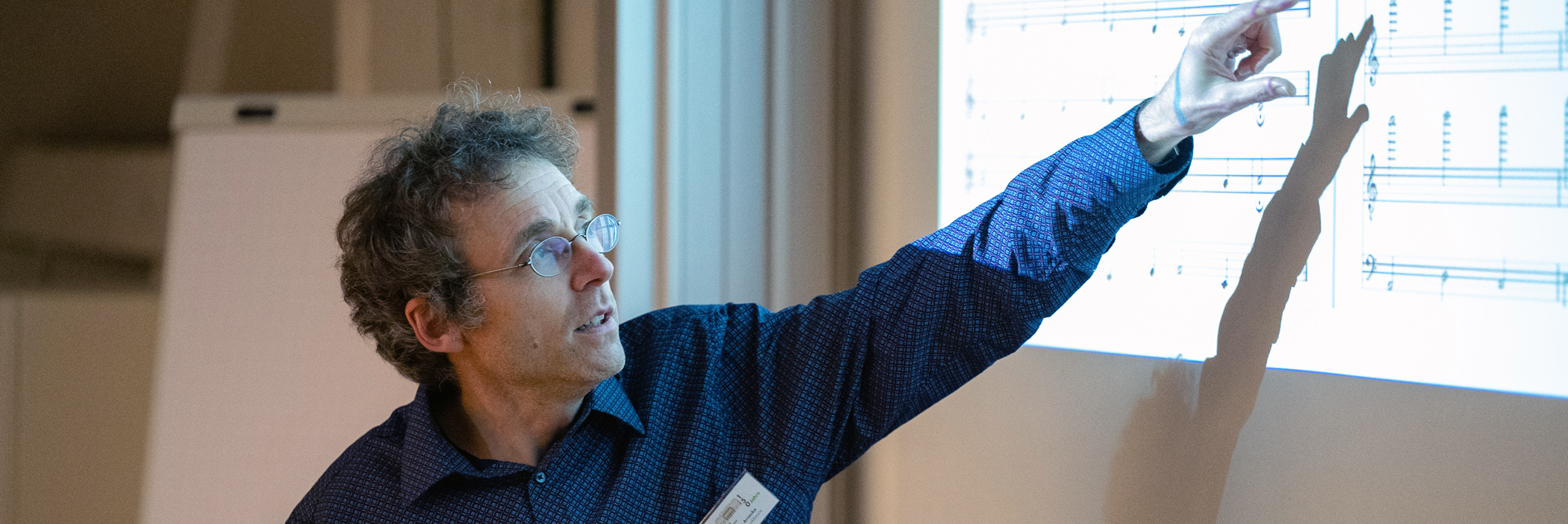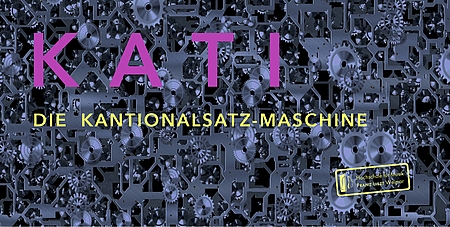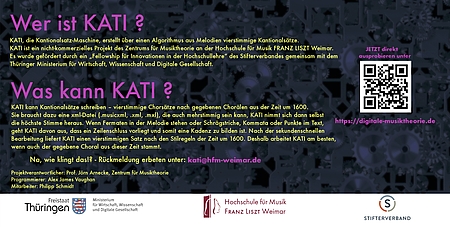KATI - Die Kantionalsatz-Maschine
Cantional movement machine and practice program - new digital approaches in music theory
Project leader: Prof. Jörn Arnecke, Centre of Music Theory
Programmer: Alex James Vaughan
Employees: Philipp Schmidt
Funding: "Fellowship for Innovations in University Teaching" of the Stifterverband, Thuringian Ministry of Economics, Science and Digital Society
Project goal
Rule-based algorithms were used to create four-part chorales according to a practice that was widespread around 1600 using the "Kantionalsatz-Maschine". This led to a new methodological concept for the development of the cantional movement in the first semester of the Bachelor of Music (introductory phase, module "Music Theory I").
Implementation by Master's students of music theory
Based on specialist musical literature, they worked on developing the rules from which an algorithm was built using the Python programming language. They checked the resulting chorale movements and discussed whether the set of rules needed to be supplemented.
→ Further information on the funding application
Project result
KATI can write cantional movements - four-part choral movements based on given chorales from around 1600. To do this, it needs an xml file (.musicxml, .xml, .mxl), which can also be polyphonic; KATI then takes the highest voice itself. If there are fermatas in the melody or slashes, commas or dots in the text, KATI assumes that there is a line end and therefore a cadence is to be formed. After editing in a matter of seconds, KATI delivers a four-part movement according to the stylistic rules of the period around 1600, which is why KATI works best when the given chorale also dates from this period.
Example


